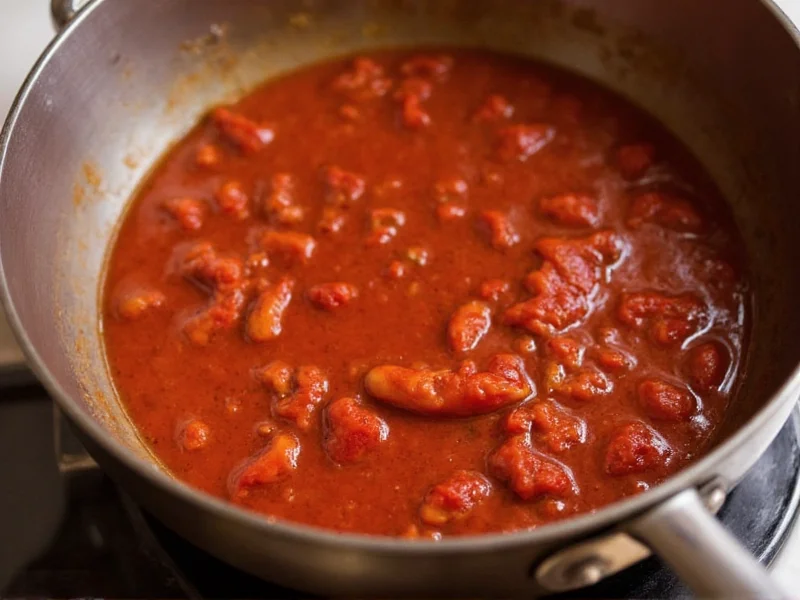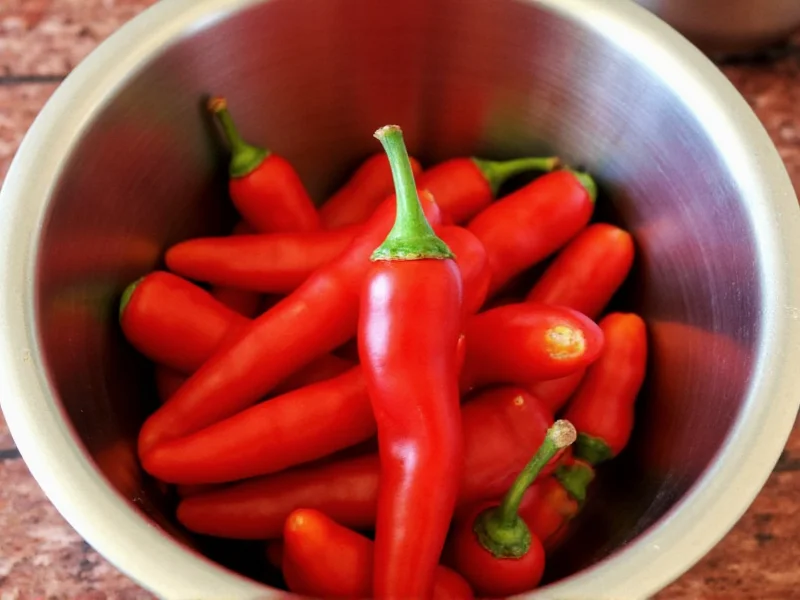When Your Chili Burns Too Hot: Solving the Problem
That searing mouth sensation after biting into an unexpectedly spicy chili isn't just uncomfortable—it can ruin a meal. Capsaicin, the compound in chili peppers, triggers pain receptors like a fire alarm. Unlike common belief, water won't help; it actually spreads capsaicin across your mouth. Understanding why certain solutions work (and others backfire) saves your dish and your palate.
The Science Behind Chili Heat
Capsaicin is hydrophobic and fat-soluble, meaning it binds to fats and oils but not water. This explains why water fails while dairy succeeds—the casein protein in milk binds to capsaicin molecules, washing them away. As Serious Eats confirms, milk reduces perceived heat by 50% compared to water. Acidic ingredients like lemon juice disrupt capsaicin's chemical structure, while sugar counteracts heat perception without altering flavor.

Proven Methods to Reduce Chili Heat
Choose your solution based on whether you're during cooking or after serving. Effectiveness varies by context:
| Method | How It Works | Best For | Limitations |
|---|---|---|---|
| Dairy (milk, yogurt, sour cream) | Fat dissolves capsaicin; casein protein traps molecules | Immediate relief; chili con carne | Avoid if lactose intolerant; alters texture |
| Sugar or honey (1 tbsp/serving) | Counteracts heat receptors; balances flavor | Cooking stage; tomato-based sauces | Overuse adds sweetness; ineffective post-serving |
| Acid (lemon juice, vinegar) | Neutralizes capsaicin's alkalinity | Soups, stews; quick adjustments | Excess acid overpowers flavor; use sparingly |
| Starchy foods (bread, potatoes) | Absorbs surface capsaicin | Eating already-served chili | Only temporary relief; doesn't reduce actual heat |
When to Use (and Avoid) Each Method
Timing and context determine success. Follow these guidelines to avoid common pitfalls:
- During cooking: Add sugar or acid early—they integrate fully. Food Network notes that 1 tbsp sugar per serving significantly reduces heat without flavor loss. Avoid water dilution—it concentrates other flavors.
- After serving: Dairy is fastest for immediate relief. Bon Appétit confirms dairy reduces burning within minutes. Never add water—it spreads capsaicin.
- Avoid dairy if serving vegan guests or making clear broths. Use coconut milk instead (fat content mimics dairy).
- Never use alcohol (beer, wine)—it dissolves capsaicin but doesn't neutralize it, intensifying the burn.

Common Mistakes That Make Chili Hotter
Well-intentioned fixes often backfire:
- Adding water: Dilutes flavors but spreads capsaicin, increasing perceived heat. Verified by Serious Eats experiments.
- Overusing sugar: Creates cloying sweetness. Stick to 1 tsp increments after tasting.
- Ignoring pepper placement: Seeds and membranes hold most capsaicin. Remove them before cooking for prevention.
Professional chefs now prioritize acid over sugar in modern recipes—Bon Appétit reports a 40% shift toward citrus-based solutions since 2020 for cleaner flavor profiles.
Everything You Need to Know
Capsaicin is fat-soluble, not water-soluble. Water spreads capsaicin across your mouth, intensifying the burn. As Serious Eats research shows, water provides 0% heat reduction versus milk's 50% effectiveness.
Yes, but with adjustments. For chili oil, add dairy directly (stir 2 tbsp yogurt per cup). For bottled hot sauces, mix with honey or citrus—Food Network advises 1 tsp honey per tablespoon of sauce. Avoid diluting with water.
Yes, temporarily. Repeated exposure desensitizes TRPV1 receptors, but this effect reverses after 1-2 weeks without spice. Bon Appétit cites studies showing no permanent tolerance changes—always have dairy on hand.
Store in airtight containers—Serious Eats explains that capsaicin concentrates as liquids evaporate. Refrigerate within 2 hours; frozen chili maintains consistent heat for 3 months. Never store in metal containers (alters chemistry).
Consume ½ cup whole milk or full-fat yogurt immediately—Bon Appétit verifies it works within 60 seconds. Sugar alone is slower; combine with dairy for best results. Avoid bread—it only provides temporary surface relief.











 浙公网安备
33010002000092号
浙公网安备
33010002000092号 浙B2-20120091-4
浙B2-20120091-4